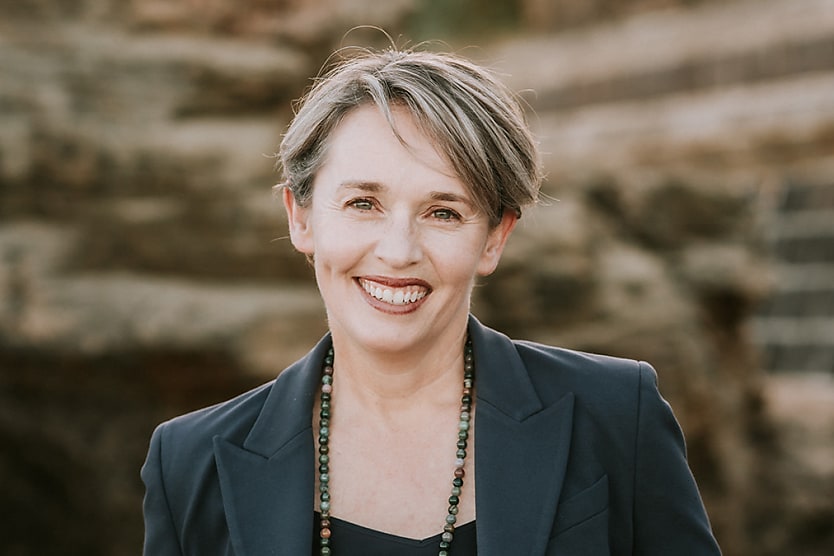
As we approach International Women’s Day, let’s evolve beyond traditional gender narratives to explore how unleashing everyone’s full human potential could transform our workplaces, writes Dr Michelle McQuaid.
As resistance to traditional DEI approaches grows, many HR leaders find themselves at a crossroads. The familiar playbook of gender metrics, unconscious bias training, and women’s leadership programs isn’t delivering the transformative change we hoped for. Perhaps that’s because we’ve been having the wrong conversation all along – one that divides rather than unites us in our shared human experience.
The evidence for changing our approach comes from an unexpected source. Dr Carol Gilligan, whose research revolutionised our understanding of gender development, recently made a remarkable admission: 40 years of studying gender differences led her to realise we’ve been asking entirely the wrong questions. The real story wasn’t about gender differences at all – it was about how societal expectations force women to silence their inner knowing and men to suppress their natural capacity for connection and care between the ages of 11–14. When we peel back these layers of “good girl” and “tough guy” conditioning, we discover something remarkable: a shared human hunger to be seen, valued, and accepted for who we uniquely are.
Rather than focusing on “fixing” gender differences, workplaces need conversations that explore how societal expectations of gender shape everyone’s behaviour. For example, my research with over 1,000 Australian women reveals how these expectations play out daily in our workplaces. Women report exhausting themselves trying to maintain the “good girl” image through perfect performance, people-pleasing, and protecting others at any cost. Meanwhile, Dr Niobe Way’s research demonstrates how men face pressure to maintain a “tough guy” facade that requires disconnecting from their natural desire for meaningful relationships and emotional expression. The result? Workplaces where both men and women feel unable to bring their full capabilities to the complex challenges we face.
The cost isn’t just personal – it’s strategic. When people believe their acceptance depends on meeting society’s gender expectations, they withhold their most valuable perspectives. Innovation suffers. Creativity stalls. Compassion falters. The very human qualities needed to navigate today’s complex challenges get suppressed beneath layers of protective conditioning.
This International Women’s Day presents an opportunity to evolve the conversation. Instead of focusing on closing gender gaps, what if we explored how traditional expectations limit everyone’s potential? Three critical dialogues could transform your workplace:
When ‘high performance’ becomes a gender trap
Want to spot the biggest blind spot in your high-performance culture? It’s hiding in plain sight. While you’re celebrating your top performers, you’re often rewarding deeply gendered behaviours: women who’ve mastered the art of pleasing everyone but themselves, and men who’ve perfected the illusion of having everything under control. Your wellness programs might teach mindfulness and resilience, but they’re missing something crucial: how these “high performance” behaviours are childhood survival patterns in professional disguise. The solution isn’t another stress management workshop – it’s helping people build the self-compassion to recognise and release these gendered expectations of excellence.
The protection paradox
Think your psychological safety initiatives are working? Here’s an uncomfortable truth: many of our workplace practices still reward people for staying in self-protection mode. Many women believe that their advancement depends on anticipating others’ needs while suppressing their own voice, and many men believe that the best way to progress is by proving they never need support. Neuroscience reveals the cost: when our nervous system is in protection mode, we lose access to the very capabilities – creativity, compassion, flexibility, and strategic thinking – that define great leadership. Yet these protective patterns feel so normal we rarely question them. The solution isn’t just creating safe spaces – it’s helping people recognise and regulate the protection patterns that gender conditioning has shaped.
Beyond the binary trap
Would you be surprised to learn your inclusion efforts might be reinforcing the very gender divisions you’re trying to eliminate? Check your program calendar: leadership for women, emotional intelligence for men, unconscious bias for everyone. By treating gender as a gap to bridge rather than a construct to question, we keep recycling the same approaches – with diminishing returns. What if the path to inclusion isn’t about fixing either gender, but about developing everyone’s capacity for self-leadership? When people learn to recognise and challenge gender expectations, they don’t just bring their authentic selves to work – they help create workplaces where everyone can thrive.
The organisations that will thrive amid today’s disruption aren’t those with the best diversity metrics, but those that create spaces for genuine human connection and growth. This requires courage from HR leaders – courage to question inherited assumptions, to make the invisible visible, and to lead conversations that unite rather than divide.
As we approach International Women’s Day, let’s evolve beyond traditional gender narratives to explore how unleashing everyone’s full human potential could transform our workplaces. The future of workplace equality might not lie in focusing on our differences, but in recognising and nurturing the fundamental human needs we all share.
Dr Michelle McQuaid is a workplace wellbeing researcher.









